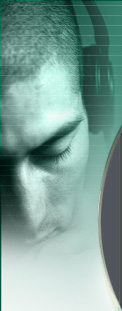
|
 |
Don Stahl is a Detective Sergeant with the Charles County Sheriff’s Office who also serves as his agency’s Forensic Artist. He came to apply his artistic abilities in the Forensic Art field in 1999, while assigned as a robbery detective, when he found that hand drawn composites were beneficial to his investigations. Since that time, Stahl has completed approximately 300 hours of training, attending courses at Northwestern University and at the FBI Academy, in Quantico, Virginia. He is an active member in the International Association for Identification, and has successfully completed the certification process for the Forensic Art Discipline.
Don Stahl has worked in the law enforcement profession since 1985. Since becoming a detective, in 1998, Stahl has worked property crimes, robbery, child abuse sex crimes and homicide. Missing persons investigations were also among his responsibilities.
Listed are some of the Forensic Art Applications that are available.
Forensic Facial Reconstruction: When unidentified skeletal remains are found, this process is one method that may be used to help identify the deceased. Working with assistance from a forensic anthropologist, the artist applies clay to the unidentified skull in an attempt to reconstruct a face. Tissue depth tables, containing information obtained in anthropological studies, are used as a reference to guide the sculpting of a face which approximates how the deceased appeared in life. Two dimensional reconstruction is achieved when the artist uses the same data to assist in drawing a face on an overlay placed on the photograph of a skull.
Post Mortem Drawing: In situations where an unidentified body is recovered in a condition that an artist can achieve a likeness based on photographs or by actually viewing the remains, a postmortem drawing is done. The artist will complete a drawing or a digitally produced image which investigators can use to help identify the deceased. In this method, the goal is to closely approximate the way the deceased appeared when they were alive.
Age Progression: This form of forensic art may be done by drawing or digitally producing an image of a person for the purpose of showing how they may look after aging for a significant period of time. In this method, a photograph, usually of a missing person or fugitive from justice, is the starting point for the forensic artist. From there, they apply their knowledge of facial anatomy and the principles of aging the human face to produce an image of what that person might look like at the current time. Similar techniques may be used to show what the person looks like with a different hair style, with or without facial hair, and so on.
Composite Imagery: A form of forensic art commonly used to help identify the unidentified suspect in a crime. In this technique, the forensic artist interviews the victim or witness to a crime. During this interview, the interviewee helps the artist to combine features to form a composite image which resembles their memory of the suspect.
These are just a few categories of forensic art that aid investigator in solving crimes or locating the lost. The field continues to evolve, and new uses for art in law enforcement arise every day. To contact:
|
|
|
|
| |
|
|


